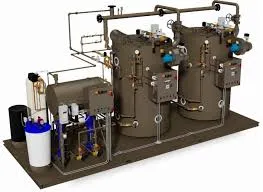
Nov . 08, 2024 22:25 Back to list
Current Prices and Trends for Low Pressure Steam Market
Understanding Low Pressure Steam Pricing
Low pressure steam, often referred to as low pressure saturated steam, is an essential component in various industrial processes, including heating, sterilization, and power generation. The price of low pressure steam can be influenced by several factors, including generation costs, demand and supply dynamics, market competition, and external economic conditions. In this article, we will delve into these factors to better understand the pricing of low pressure steam.
Generation Costs
The cost of producing low pressure steam is a primary factor in determining its price. The production process typically involves heating water through various means, such as natural gas, oil, coal, or electricity, in a boiler. The type of fuel used can significantly influence the cost of steam. For instance, natural gas has been the preferred fuel due to its relatively lower cost and higher efficiency compared to other fossil fuels. However, fluctuations in fuel prices can directly affect low pressure steam pricing. When fuel prices rise due to geopolitical tensions or market shortages, the production costs of steam increase, leading to higher prices for end-users.
Demand and Supply Dynamics
Like any commodity, the price of low pressure steam is subject to the basic economic principles of demand and supply. Industries that rely on low pressure steam, such as food processing, pharmaceuticals, and paper manufacturing, create a consistent demand for this resource. Seasonal variations and economic growth can cause fluctuations in demand. For instance, during peak production seasons, demand for steam may rise sharply, leading to short-term price increases.
Conversely, if technological advancements allow industries to utilize alternative sources of energy or implement energy-saving measures, the demand for low pressure steam might decline. This decrease in demand can lead to lower prices, creating a delicate balance in the market. Suppliers must remain agile in adjusting their output to maintain competitiveness while ensuring a steady supply of low pressure steam to meet industry requirements.
Market Competition
low pressure steam price

The competition among steam suppliers also plays a crucial role in determining the price of low pressure steam. In regions with multiple suppliers, the competition can drive prices down as companies strive to capture market share. Conversely, in areas where a single supplier dominates the market, prices may remain high due to the lack of alternatives. The entry of new players or the consolidation of existing ones can significantly shape the dynamics of the market.
Contracts and long-term agreements can also influence pricing. Many industrial users of low pressure steam enter into contracts with suppliers, locking in prices for specified periods. These agreements help stabilize costs for businesses but may also lead to disparities in pricing as spot market prices fluctuate in response to supply and demand changes.
External Economic Conditions
Macroeconomic factors, such as inflation, interest rates, and overall economic health, can have indirect effects on low pressure steam pricing. For instance, during periods of economic growth, industrial production typically increases, leading to higher demand for low pressure steam. This can create upward pressure on prices. Conversely, economic downturns often result in reduced industrial activity, potentially leading to lower prices.
Additionally, government regulations and environmental policies can influence steam prices. Efforts to reduce carbon emissions and promote green energy sources may increase operational costs for traditional steam generation, which could be passed on to consumers in the form of higher prices. Companies that adapt to environmental regulations while remaining cost-effective may gain a competitive advantage in the market.
Conclusion
Understanding the pricing of low pressure steam involves a multifaceted analysis of generation costs, demand and supply dynamics, market competition, and external economic factors. As industries continue to evolve and face new challenges, stakeholders must remain vigilant to these variables in order to make informed decisions regarding their energy needs. By keeping an eye on the trends and forces at play in the low pressure steam market, businesses can better navigate the complexities of pricing and ensure they efficiently manage their steam requirements.
-
High-Efficiency Commercial Oil Fired Steam Boiler for Industry
NewsJul.30,2025
-
High-Efficiency Biomass Fired Thermal Oil Boiler Solutions
NewsJul.30,2025
-
High Efficiency Gas Fired Thermal Oil Boiler for Industrial Heating
NewsJul.29,2025
-
High-Efficiency Gas Fired Hot Water Boiler for Sale – Reliable & Affordable
NewsJul.29,2025
-
High Efficiency Biomass Fired Hot Water Boiler for Industrial and Commercial Use
NewsJul.29,2025
-
High-Efficiency Biomass Fired Hot Water Boiler for Industrial Use
NewsJul.28,2025
Related PRODUCTS






















